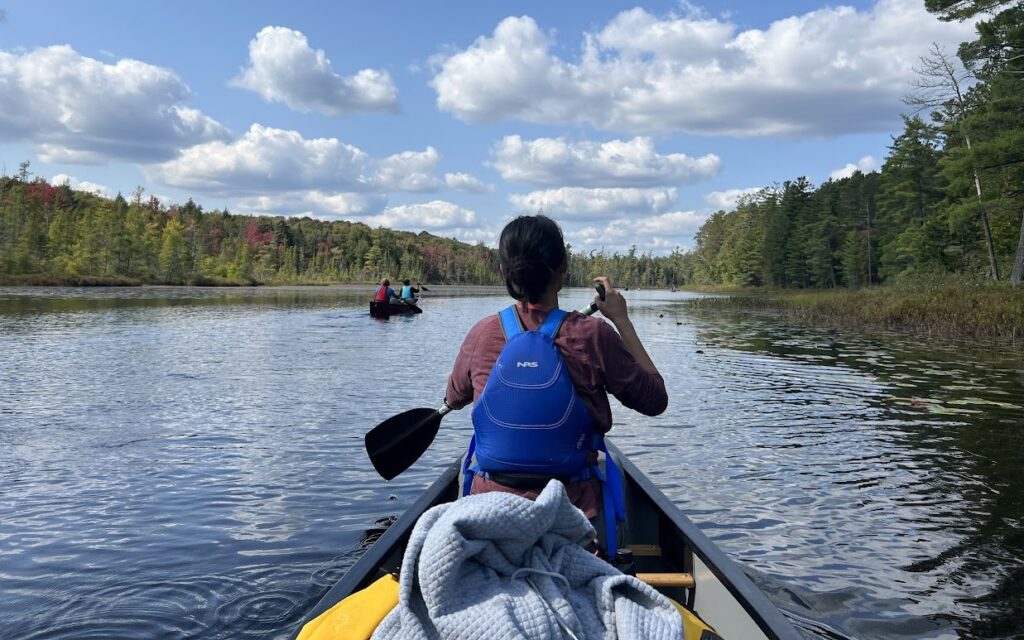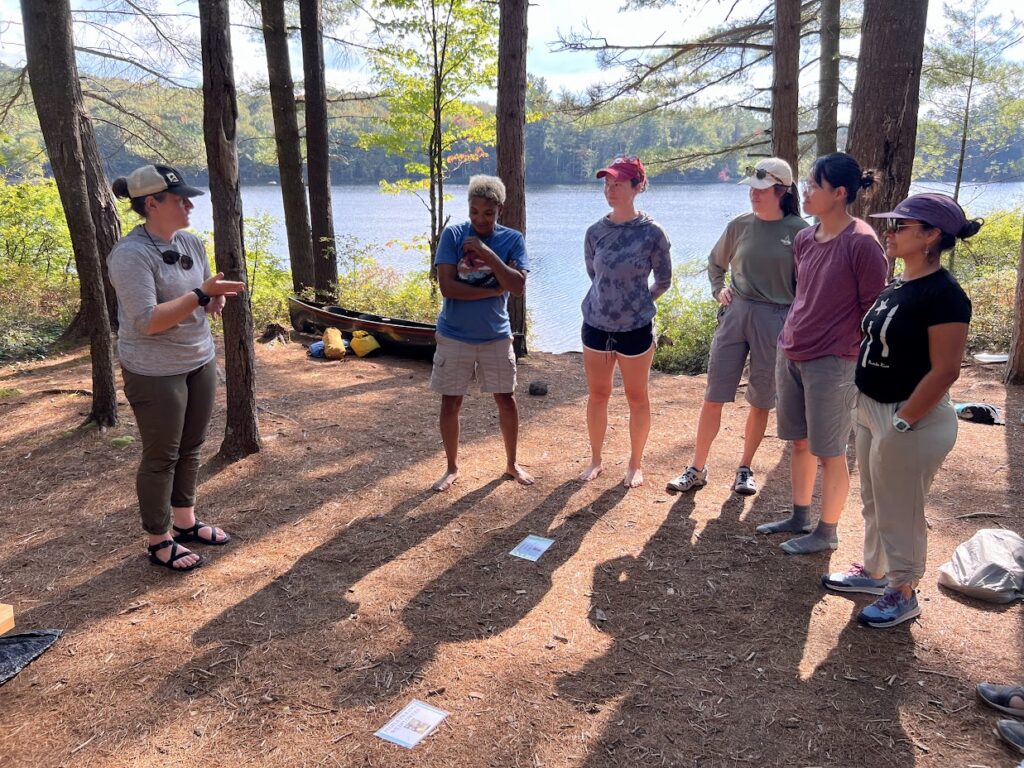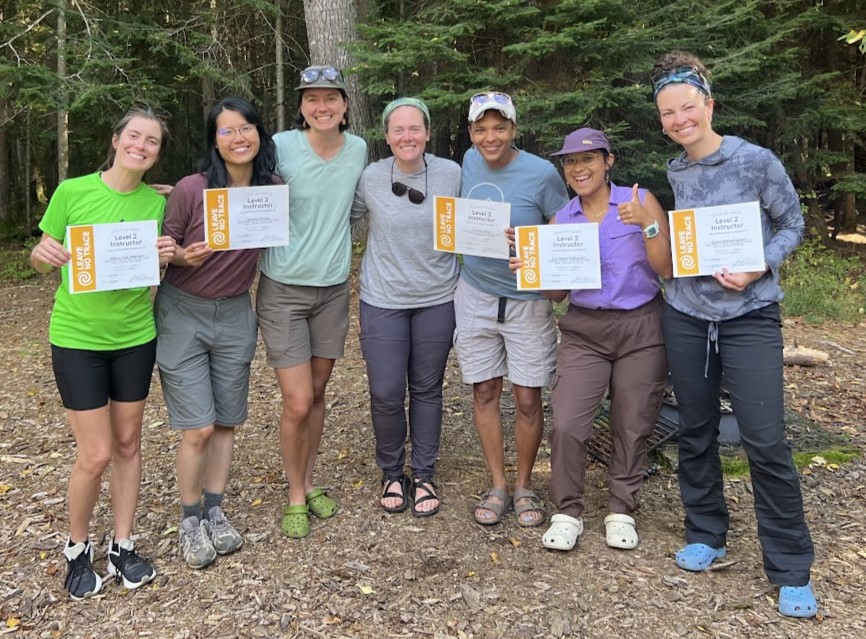Leave No Trace in American Sign Language
Leave No Trace in American Sign Language
As many outdoor organizations look to include more diverse groups of outdoor enthusiasts, Adirondack Mountain Club (ADK) held the first ever Leave No Trace Level 2 Instructor Course offered in American Sign Language (ASL) in September 2024. This allowed Deaf participants to directly communicate with one of their instructors and their classmates in their primary language of ASL. Beyond that, it will have a major ripple effect in the Deaf Community in the years to come. It will allow deaf instructors to teach directly to Deaf students, eliminating major challenges in the Deaf outdoor community.
To offer this unique course, ADK partnered with CorpsTHAT, a nonprofit based in the Washington, D.C., area whose mission is to connect the Deaf Community and the outdoors through education, recreation, and careers. The five-day, three-night Leave No Trace Level 2 Instructor Course, formerly known as the Master Educator Course, is the highest level of Leave No Trace education available to the public. ADK is one of only about a dozen organizations in the country to provide it.
During the course, students lead their own fifteen-minute lesson on one of the seven principles of Leave No Trace and learn additional activities to teach the skills and ethics associated with the topic. Research into the creation of the principles is also discussed. The course takes place in the field—in this case, during a canoe camping trip in the Saranac Lake Wild Forest! Those certified as Leave No Trace Level 2 Instructors after the completion of the course are then qualified to instruct Level 1 Instructor courses (formerly known as Trainer Courses).

The idea to offer this five-day training for the Deaf started in 2019. Emma Bixler, one of CorpsTHAT’s founders, took the course with ADK. She came away hopeful that the course could one day be offered, with ADK’s help, to the Deaf Community. To that end, Emma paired me with Sam Bragg, the Field & Logistics Director at CorpsTHAT and a Level 2 Leave No Trace Instructor since 2019. Sam has been Deaf since birth and would be my co-instructor.
The world is designed for hearing people, so this course presented many challenges, in addition to those that come with running any five-day course that takes place in the field. Interpreters needed to be hired, as I was the sole instructor from ADK and I did not know ASL. I would need all course content to be shared with me and signed for me as I taught. Finding interpreters, especially those willing to join us in Lake Placid for nearly a week as we camped, paddled, and spent long days doing activities, was another hurdle to overcome. Then there was the additional cost for a trio of interpreters. We were very fortunate to receive $10,000 from Leave No Trace to secure the interpreters and bring this course to life!

Once we had “Planned Ahead and Prepared” (principle one of Leave No Trace) for our course and it was finally here, there was a still a steep learning curve for me as the only non-signer in the group. I had to rethink a lot of my usual activities to consider the use of a visual language. The lighting within the campsite had to be taken into consideration, as it does not work well if the presenter is backlit. This meant we had to push to get through the day’s curriculum before dark—a challenge on those shorter September days. Downtime in camp was also a lot different for me. I couldn’t casually engage in conversation with the students without having an interpreter nearby to facilitate it.
While I found myself constantly pivoting my lesson plans and reimagining ways to be an effective educator, I found so many moments of joy and bonding. For five days, the only sound coming from our group of eleven was laughter, and there was only one voice at a time as I spoke, or an interpreter told me what a student was signing. I’m used to being a part of larger groups in the woods that generate a lot of noise, so this was an enjoyable change for me.
Silence cleared the airways for more loon calls, owl hoots, and red squirrel barks for the hearing people on the trip. Since mealtimes were particularly quiet, a barred owl joined us one night, sitting nearby for several minutes. I’ve never gotten such a close and long look at an owl, and we had our relative silence as a group to thank for that.
The main takeaways for me while teaching this course came as we covered the topics “Be Considerate of Others” and “Outdoor Ethics.” My students expressed frustration over having to adapt to a world designed for hearing people and made the following suggestions:
- Don’t get mad if someone doesn’t move out of the way when you ask to pass—they might not be able to hear you.
- Don’t assume someone heard you and will move over as you get closer to passing them.
- Consider throwing a small object, like a pinecone, into a person’s field of vision to alert them or tap them on the shoulder if you need to get their attention.
- Apps, like Big Note, can be helpful to keep on your phone for interactions anywhere with the deaf and hard of hearing. The app allows you to quickly type a message in an easy-to-read format in large letters.Consider taking a course with CorpsTHAT. They have ASL courses, and workshops on how to select interpreters, Deaf Culture, and more.
This experience was like no other in my career as an outdoor educator. It was eye-opening to be in the minority within my group when it came to language, and powerful to see my students enjoy this Deaf space that they so rarely get to have. I am so excited to see what the students do with this training, and how Leave No Trace is about to get much more accessible within the Deaf Community.

This article was written by Mary Glynn, former ADK Education Programs Manager, for the Winter 2025 issue of Adirondac magazine. Photos were provided by Emma Bixler, CorpsTHAT Program Director and Co-founder.
Related
Homeschool in the Woods
Homeschool in the Woods is ADK’s newest youth program. It is a place-based, hands-on, and […]
Beavers & Climate Change
Beavers: Furry wetlands residents with buck teeth and a paddle tail. Also, New York State’s […]
Invasive Species & Climate Change
When you look into the various effects of climate change, there are plenty of passing […]
Nurturing the Next Generation of Stewards
By Tom Andrews, ADK President The Adirondack Mountain Club has a long history of connecting […]

